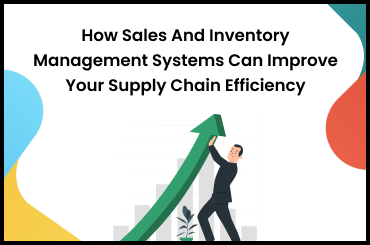Cost of revenue refers to the expenses generated by a business directly linked to producing goods or services. It's an important aspect of understanding a business's financial health. It also helps in profitability and efficiency. By analyzing COR, companies can make important decisions to improve their operations.
What Is Cost of Revenue?
The Cost of Revenue is the money a business spends to make its products or services. This cost is directly tied to the COR operations of the business. It includes expenses like, manufacturing overhead, raw materials, and labor.
Understanding the what is cost of revenue is important. It provides insights into a business's profitability and efficiency. By looking at this, businesses can find places where they spend too much or where they can save money. It then helps in making informed financial decisions. Monitoring is important for effective cost management and financial success.
How Cost of Revenue Works
The Cost of Revenue (COR) is an important financial metric and here's how it works:
- To calculate the Cost of Revenue, add all the direct costs associated with the production process. It includes raw materials, labor, and manufacturing overhead.
- By analyzing the Cost of Revenue, businesses gain insights into their cost structure. It can make informed decisions about pricing strategies, operational efficiencies, and potential cost reductions.
- Comparing the Cost of Revenue with industry standards and competitors' figures helps businesses. It’s important to evaluate their cost competitiveness and market positioning.
- Cost of Revenue is a key component in calculating gross profit. It provides a clear picture of how efficiently a business generates profit from its Cost of revenue operations.
Formula and Calculation of Cost of Revenue
Understanding how to calculate cost of revenue involves a straightforward formula:
Cost of Revenue = Cost of Goods Sold (COGS) + Additional Direct Costs
Let's break down this formula:
-
Cost of Goods Sold (COGS): This is the primary component of the Cost of Revenue. It includes expenses directly tied to production, such as raw materials, labor, and manufacturing overhead.
-
Additional Direct Costs: In some cases, there may be other direct costs directly related to production, like shipping or packaging expenses. We add these costs to COGS.
This formula helps businesses determine the total expenses linked to generating revenue through their Cost of Revenue operations.
Analyzing the Cost of Revenue allows businesses to:
- Evaluate their cost structure,
- Control expenses,
- Make informed decisions about pricing, profitability, and overall financial health.
It's a valuable tool for both internal management and external stakeholders. It offers insights into a business's efficiency and competitiveness.
What Is Included in Cost of Revenue
Understanding what's included in the Cost of Revenue is important for financial analysis and decision-making. Here's a detailed breakdown of what's typically included in it:
1. Direct Labor Costs
These are the wages and benefits paid to employees directly involved in the production process. For example, assembly line workers, machine operators, and quality control personnel.
2. Raw Materials
The cost of raw materials or components used in manufacturing falls under the Cost of Revenue. This includes the purchase price of materials like steel, wood, plastic, or any other inputs needed to create the product.
3. Manufacturing Supplies
This category covers items like lubricants, cleaning agents, and other consumables necessary for the production process. These supplies are important but typically don't make up a significant portion of the overall cost.
4. Utilities and Overhead
Expenses related to utilities such as electricity, water, and the gas used in the production facility are part of the Cost of Revenue. It includes manufacturing overhead costs. The costs are rent for the production facility and depreciation on machinery.
5. Shipping and Freight Costs
If a business generates shipping or freight costs. To get materials to their facility or deliver products to customers, these expenses come under the Cost of Revenue. It highlights the importance of logistics in this financial measure.
6. Direct Depreciation
The Cost of Revenue accounts for the depreciation of production equipment and machinery directly used in manufacturing. This is the distribution of the equipment's cost over its useful life.
7. Labor-related Benefits
It includes benefits like health insurance, retirement contributions, or paid time off in the Cost of Revenue. It highlights the complete nature of this financial metric.
8. Quality Control and Inspection
Expenses related to ensuring the product meets quality standards. It includes inspection and testing costs, which is a part of the Cost of Revenue. It reflects the importance of quality control in production.
9. Research and Development (R&D)
Some businesses distribute a portion of their R&D costs to the Cost of Revenue. These expenses are directly tied to product development and improvement. It allows for a more accurate representation of the true cost of producing goods and services.
10. Cost of Services (for service-based businesses)
The Cost of Revenue includes costs related to delivering services, such as labor, materials, and overhead, for service-based businesses. This metric provides a detailed view of the expenses associated with generating revenue.
Cost of Revenue vs. Cost of Goods Sold (COGS)
Understanding the difference between the cost of goods sold vs cost of revenue is important. These two metrics, although related, have important roles in a business's financial statements.
| Cost of Revenue | Cost of Goods Sold (COGS) | |
|---|---|---|
| Definition | The Cost of Revenue is the sum of expenses. It’s connected to making and delivering goods or services within a set time. | COGS refers to the direct costs associated with producing or purchasing the goods that a business sells during a given period. |
| Components | It includes costs like direct labor, materials, manufacturing expenses, and shipping. It also covers other costs linked to making and delivering products or services. | COGS typically includes raw materials, labor directly involved in production, and manufacturing overhead costs. |
| Use | The Cost of Revenue helps businesses analyze the direct costs generated in their core operations. It's a broader metric that includes more expenses beyond manufacturing or production costs. | COGS is a narrower metric. It primarily focuses on the costs directly linked to the production of goods. Businesses use it to calculate their gross profit and their gross profit margin. |
Key Difference:
- The main difference lies in the scope of expenses covered. The Cost of Revenue includes all expenses related to delivering goods or services. COGS focuses mainly on the production or purchase of goods for resale.
- COGS is used to assess how profitable a business is in its primary operations, like manufacturing or selling. Cost of Revenue provides a broader view of all costs associated with generating revenue.
Cost of Revenue Example
Let’s try to understand COR better with a practical example:
Imagine a business called "ABC" that manufactures and sells smartphones. Here's how ABC's Cost of Revenue might break down:
- Raw Materials
To make their smartphones, ABC purchases components like screens, processors, and batteries. The cost of these materials is a significant part of the Cost of Revenue.
- Direct Labor
Skilled workers assemble the smartphones on the production line. It includes their wages and benefits in the Cost of Revenue.
- Manufacturing Expenses
This includes costs related to production facilities, such as rent, utilities, and maintenance. These expenses are important for keeping the manufacturing process running smoothly.
- Shipping and Distribution
Businesses must ship them to retailers or directly to customers when it’s ready. The expenses associated with transportation and distribution are also part of the Cost of Revenue.
- Quality Control
ABC invests in quality control measures to make sure their smartphones meet high standards. Expenses for inspections and testing contribute to the Cost of Revenue.
Hence, the COR for ABC would be a sum of all these expenses, that is: Raw Materials + Direct labor + Manufacturing Expenses + Shipping and Distribution + Quality Control
Cost of Revenue vs Operating Expense
Understanding the difference between Cost of Revenue and Operating Expenses is important for better financial management. Here's a simple breakdown:
| Cost of Revenue (COR) | Operating Expenses (OpEx) |
|---|---|
| COR includes expenses directly tied to producing goods or services. These are costs such as materials, labor, and manufacturing costs. | OpEx covers a broader range of costs, including administrative, sales, and marketing expenses. |
| It reflects the cost of delivering a business's core products or services to customers. | It includes items like rent, utilities, salaries of non-production staff, and marketing campaigns. |
In summary, Cost of Revenue Cost of Revenue focuses on the costs linked to delivering a company's main products or services. Operating Expenses include a wider array of costs related to running the entire business. Both are important for understanding a business's financial health.
Cost of Revenue: Managing Financial Insights
Knowing and managing the Cost of Revenue is important for business. It reveals direct expenses in making products or providing services. It also helps in smart decisions, operational improvement, and financial success. You can monitor the Cost of Revenue in TranZact improve your financial strategies and get sustainable growth.
FAQs on Cost of Revenue
1. Is cost of revenue an expense?
Yes, the cost of revenue is an expense. It represents the direct costs a business generates in the process of producing goods or delivering services.
2. Why is cost of revenue important?
The cost of revenue is important because it helps businesses understand the true cost of their operations. It allows them to:
- Evaluate profitability,
- Make informed pricing decisions,
- Identify areas for cost-saving measures
3. What is the difference between revenue and cost of revenue?
The difference between revenue and the cost of revenue is that revenue is the total income a business earns from sales. The cost of revenue represents the direct expenses associated with producing those goods or services.
4. What is the cost of revenue analysis?
Cost of revenue analysis involves examining the various expenses. It includes the cost of revenue to understand a business's financial health and efficiency.
5. Is cost of goods sold an expense or revenue?
The cost of goods sold (COGS) is an expense because. It reflects the direct costs associated with producing goods. It is then subtracted from the revenue to calculate a business's gross profit.















